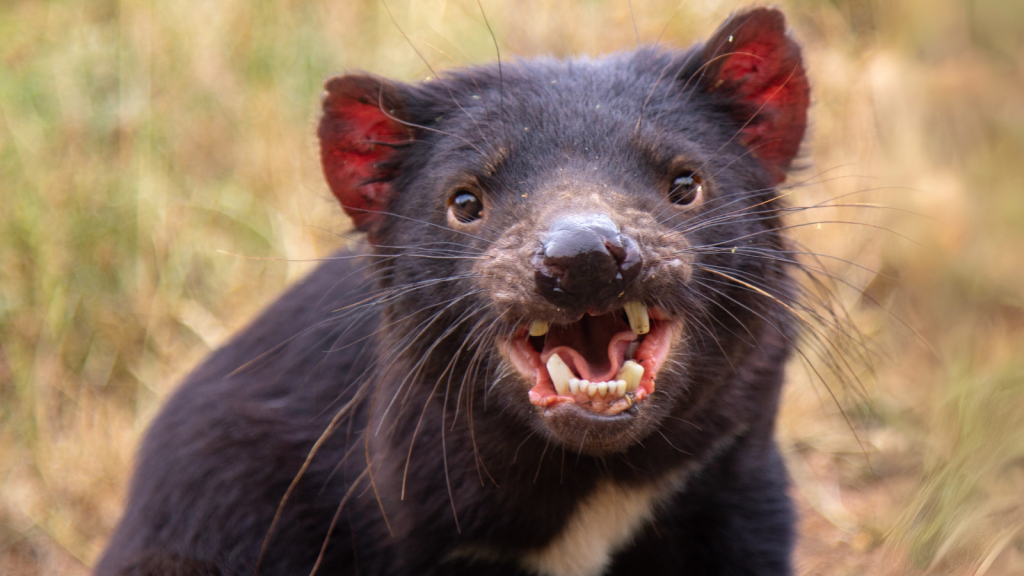The Tasmanian devil, a unique creature found only on the island of Tasmania, is a fascinating member of the marsupial family. With its fierce reputation and distinctive appearance, this small but mighty animal has captured the imagination of people worldwide. Despite facing serious threats to its survival, the Tasmanian devil continues to fight against the odds. From its powerful bite to its eerie screech, this remarkable creature is full of surprises. Let’s explore some intriguing facts about this iconic Australian animal.
Powerful Bite Force

Tasmanian devils have one of the strongest bites of any mammal their size. Their jaws can exert pressure up to 553 newtons, which is impressive for an animal that weighs only 8 to 12 kilograms. This powerful bite allows them to crush bones and eat their prey entirely, including the skull and fur. Their strong jaws and teeth are also adapted to tear through tough hides and sinews, making them efficient scavengers.
Nocturnal Hunters
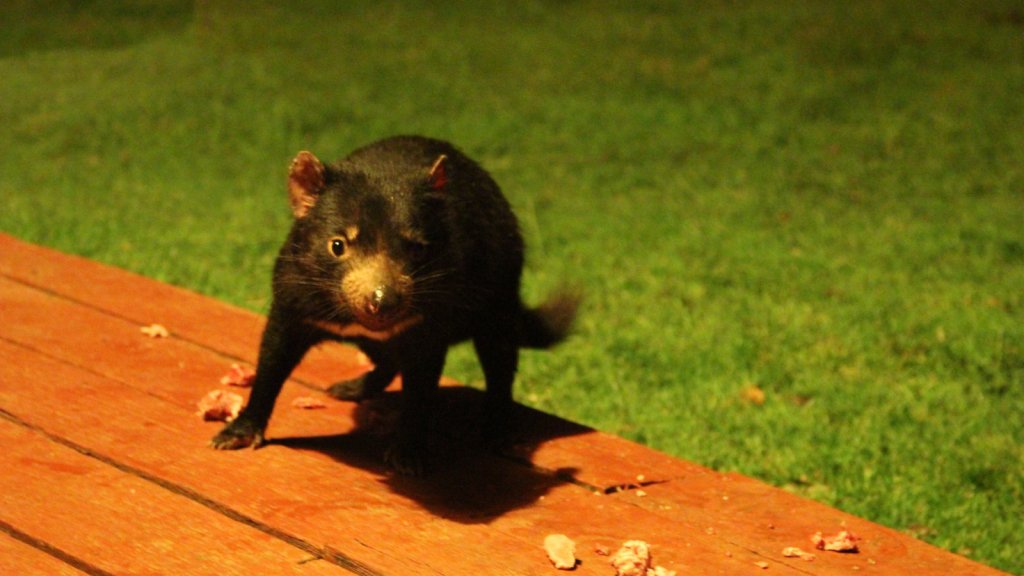
These marsupials are primarily active at night. They use their excellent sense of smell and hearing to locate food in the dark. During the day, Tasmanian devils sleep in dense bushland, hollow logs, or burrows to avoid the heat and conserve energy. Their black fur provides excellent camouflage in the darkness, allowing them to move undetected while hunting or scavenging.
Unique Vocal Repertoire
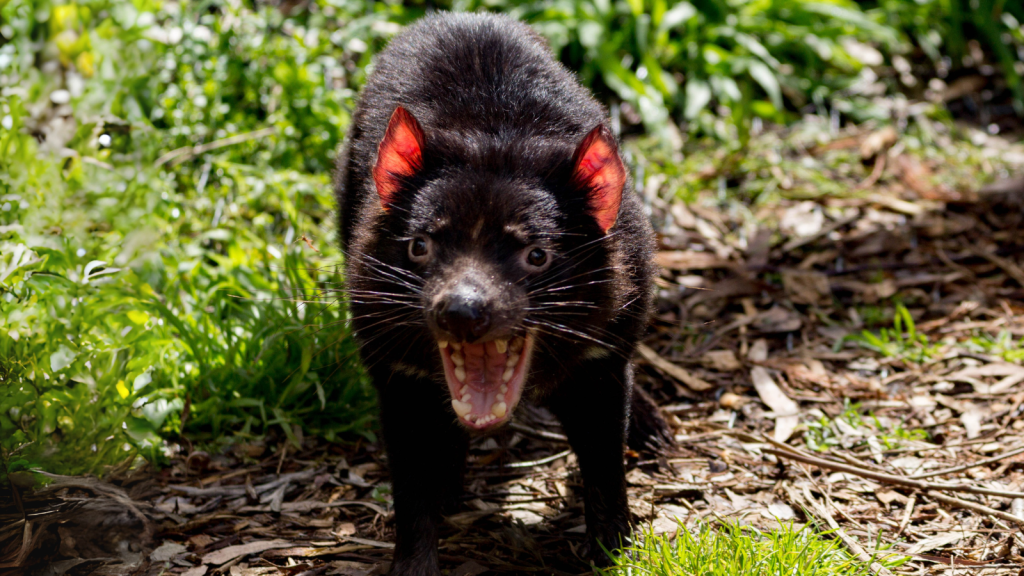
Tasmanian devils are known for their spine-chilling screech. However, they have a wide range of vocalisations, including growls, barks, and even sneezes. These sounds help them communicate with each other and warn off potential threats. Their loud and varied vocalisations play a crucial role in establishing dominance and defending feeding territories.
Carrion Connoisseurs
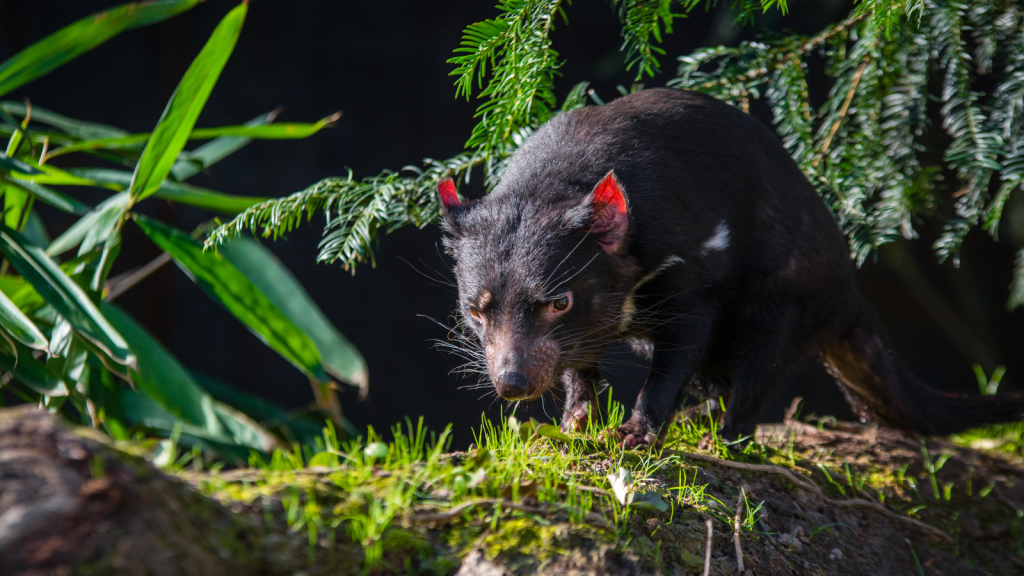
While they can hunt small prey, Tasmanian devils are primarily scavengers. They have a keen nose for finding carrion and play a crucial role in cleaning up the Tasmanian wilderness. Their diet includes wallabies, small mammals, birds, and even venomous snakes. Tasmanian devils can eat up to 40% of their body weight in a single feeding session, storing fat in their tails for times when food is scarce.
Distinctive Black Coat
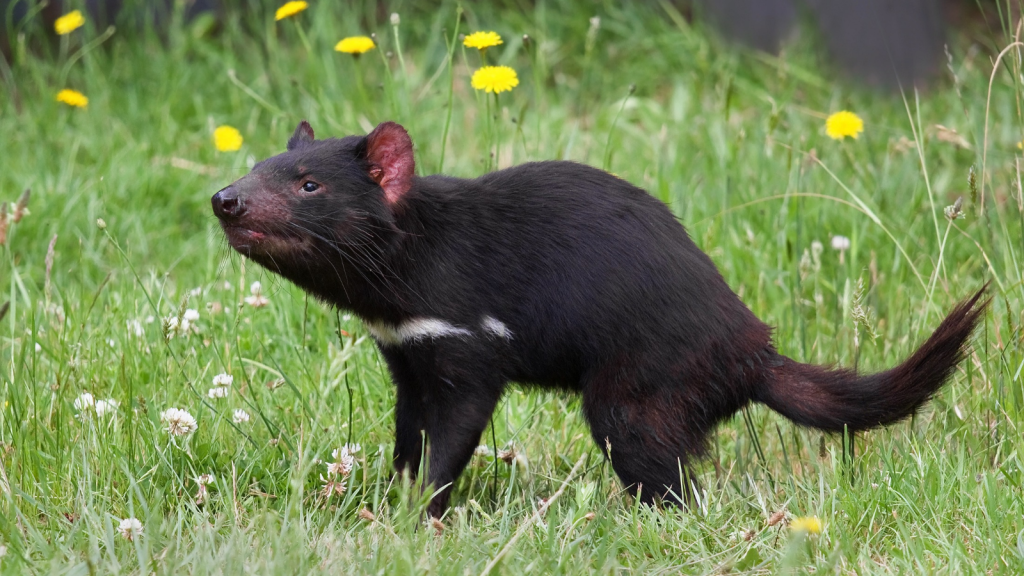
The Tasmanian devil’s jet-black fur is broken only by white patches on the chest and rump. This colouration helps them blend into the darkness during their nightly forays. Young devils are born with light fur that darkens as they mature. The white patches are thought to serve as important visual cues during social interactions among devils.
Bizarre Mating Rituals
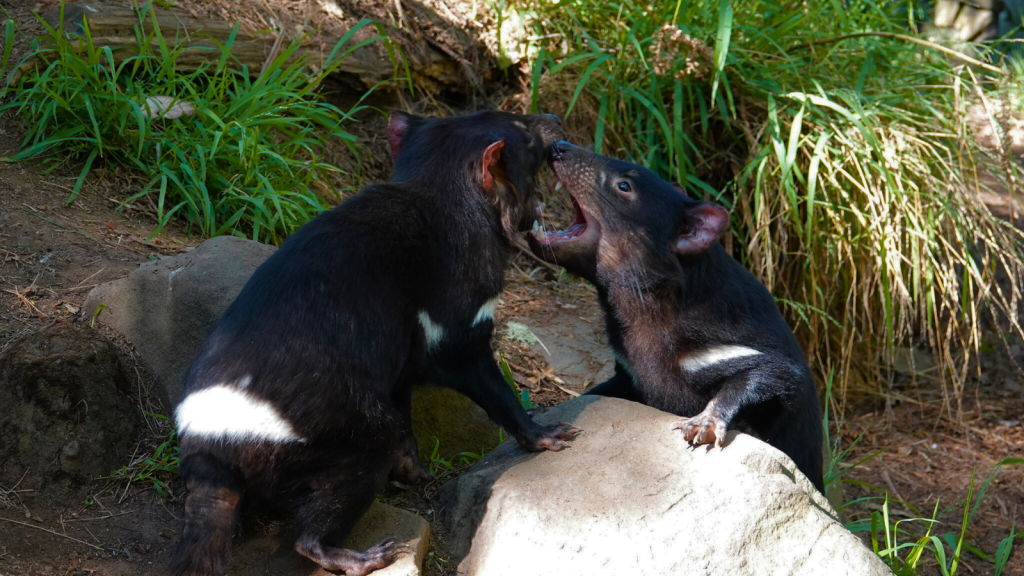
Male Tasmanian devils engage in fierce battles for mating rights. These fights involve loud screeching, chasing, and biting. Once a male wins, the actual mating process can last for hours, with the pair remaining joined for extended periods. Females are polyestrous, meaning they can have multiple breeding cycles in a year if they lose their first litter.
Speedy Pouch Development
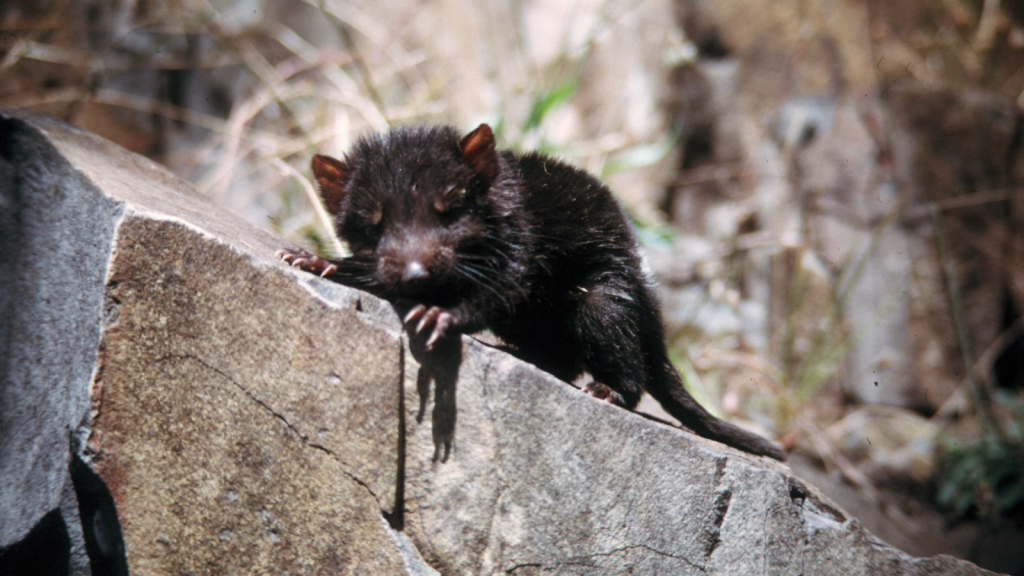
Female Tasmanian devils give birth to tiny, underdeveloped young after just three weeks of pregnancy. These jellybean-sized babies then crawl into their mother’s pouch, where they continue to grow and develop for about four months. A female can give birth to up to 40 joeys, but only has four teats in her pouch, so competition for survival begins early.
Threatened by Facial Tumour Disease
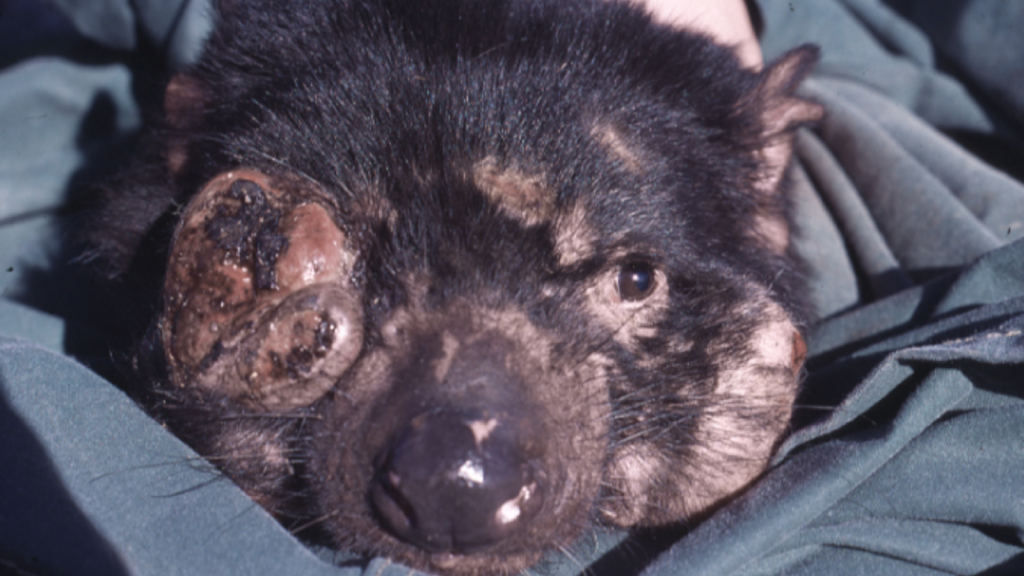
Since the 1990s, a contagious cancer called Devil Facial Tumour Disease has decimated wild populations. This rare condition spreads when devils bite each other, causing fatal tumours around the mouth and face. Conservation efforts are underway to save the species from extinction. Recent research has shown promising results in developing a vaccine against the disease, offering hope for the devils’ future.
Excellent Swimmers
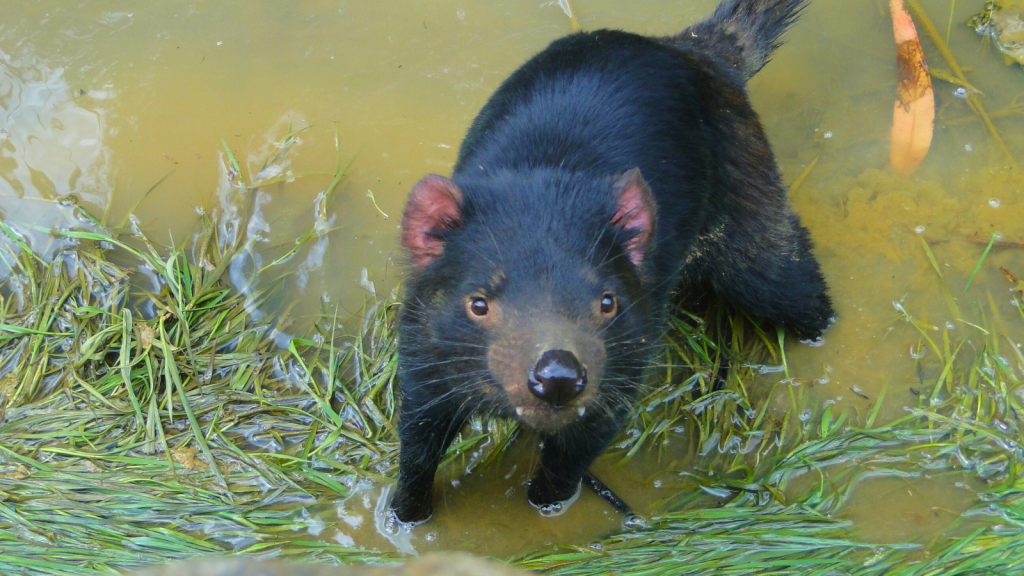
Despite their stocky build, Tasmanian devils are surprisingly good swimmers. They’ve been observed crossing rivers and even venturing into the sea. This ability helps them access food sources and explore new territories. Their swimming skills also aid in thermoregulation during hot weather, as they can cool off in water bodies.
Incredible Eating Capacity
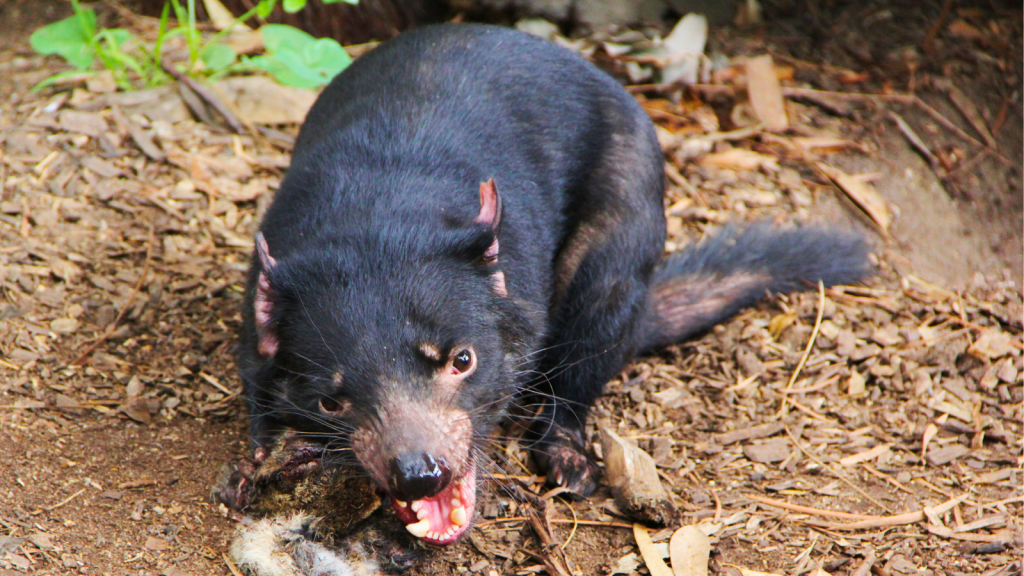
A Tasmanian devil can eat up to 40% of its body weight in a single meal. Their expandable stomachs allow them to gorge themselves when food is plentiful. This adaptation helps them survive in times of scarcity. Devils have extremely strong digestive systems that can process entire carcasses, including bones, fur, and even hooves.
Ancient Lineage
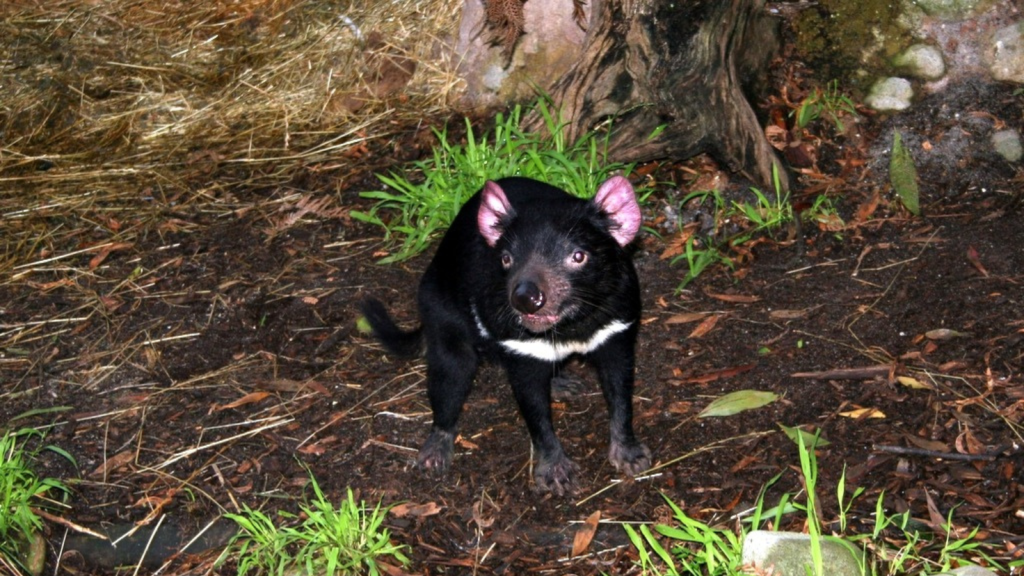
Tasmanian devils are part of an ancient group of carnivorous marsupials called dasyurids. Fossil evidence suggests their ancestors lived on the Australian mainland until about 3,000 years ago. Today, they’re found only in Tasmania. The isolation of Tasmania has allowed these unique creatures to survive while many of their mainland relatives have gone extinct.
Conservation Symbol
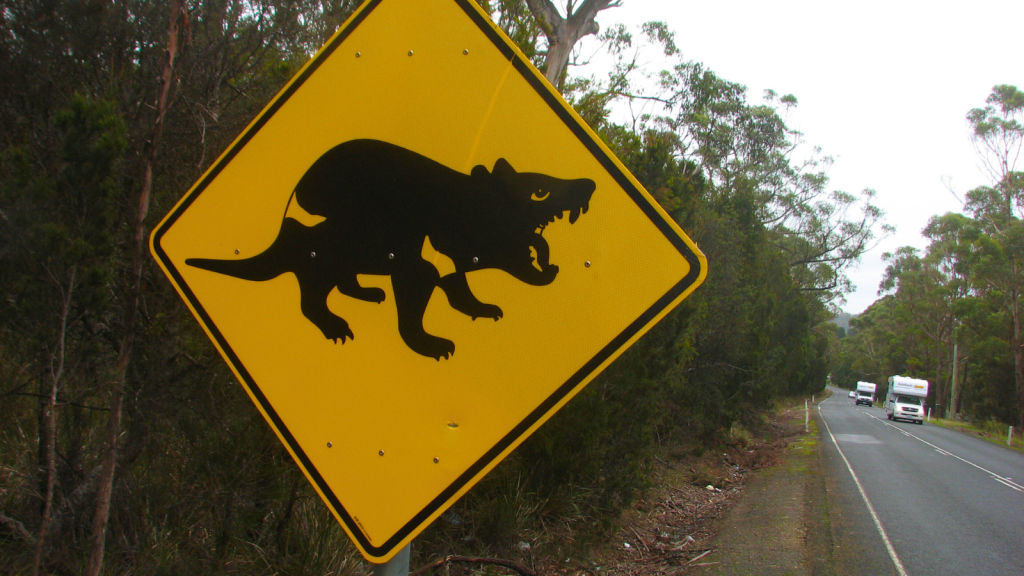
The plight of the Tasmanian devil has made it a symbol of conservation efforts in Australia. Breeding programs, disease research, and habitat protection are all part of the ongoing struggle to ensure these unique animals have a future in the wild. Public awareness campaigns have successfully raised the profile of Tasmanian devils, leading to increased funding and support for their conservation.
Becky is a fervent wildlife enthusiast and pet care expert with a diploma in canine nutrition. Her love for animals stretches beyond the domestic, embracing the wild tapestry of global fauna. With over a decade of experience in animal welfare, Becky lends her expertise to OutlandishOwl through insightful articles, captivating wildlife information, and invaluable guidance on pet nutrition. Her work embodies a deep commitment to understanding the intricate lives of animals and a passion for educating others on sustaining natural habitats. Becky's hands-on conservation efforts and her knack for translating complex dietary science into practical pet feeding tips make her an indispensable voice for creatures great and small.

